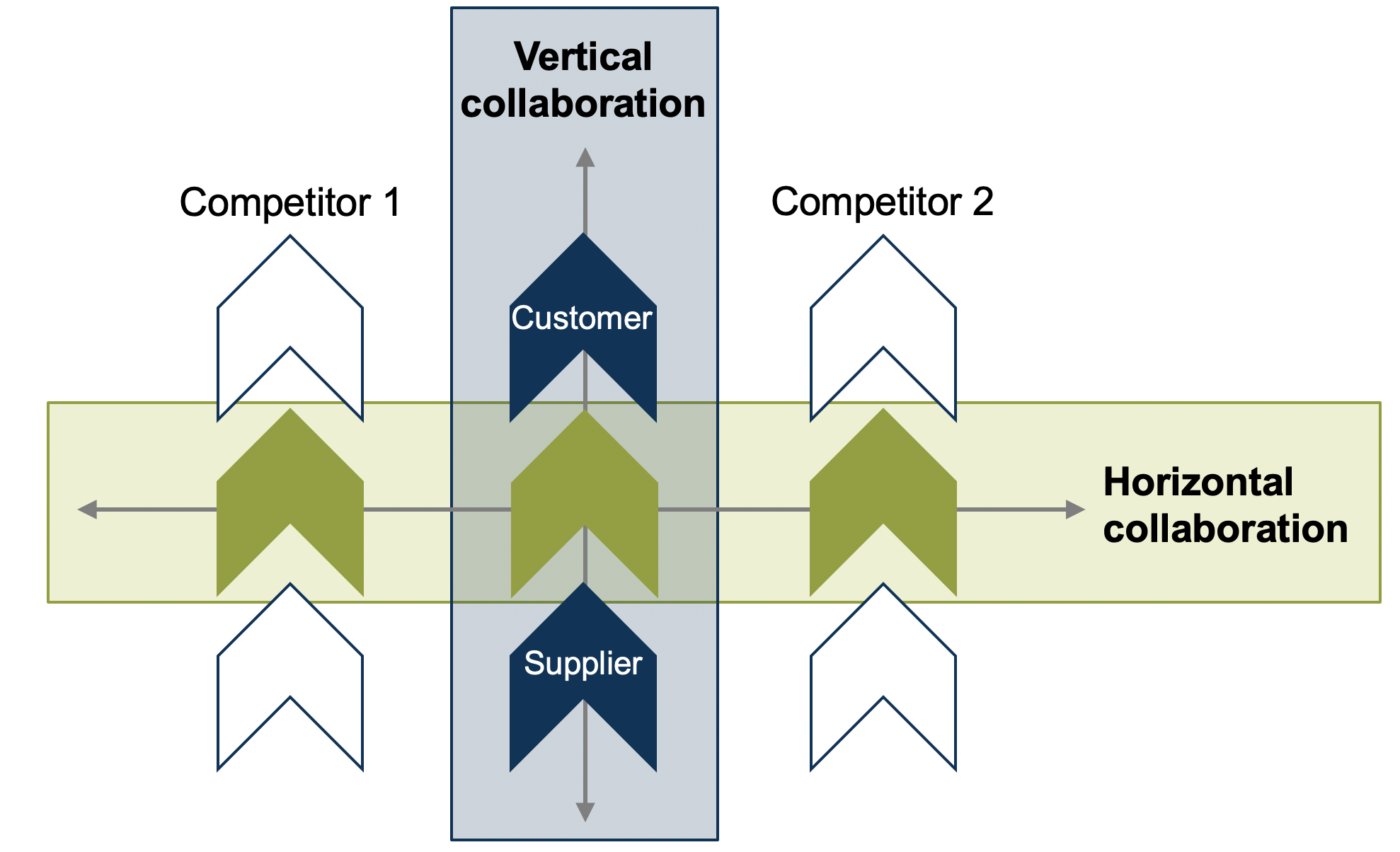The increasing number of competitors with similar business models force organizations to adapt their existing business models and technologies to remain competitive. They must adapt to the environment in which they operate as a whole ecosystem. This includes the shift from competition to coevolution with customers, suppliers, investors, and competitors (Moore 1996). As a result, they follow a specific collaboration form which is distinguished by its dimension and direction (Jagdev and Thoben 2001; Simatupang and Sridharan 2002).

Companies have to bear in mind that neither their business processes nor their IT is isolated from their business partners. In fact, companies are increasingly intertwined and interconnected with cooperating organizations (Drews and Schirmer 2014). In this research project, we try to understand the motivation, challenges, and benefits of interorganizational EAM initiatives and the use cases of interorganizational business capability maps.
If you are interested in a collaboration on this research topic, please contact Fatih Yilmaz (fatih.yilmaz@tum.de).
| [Yi21c] | Yilmaz, F.; Matthes, F.: Application of Interorganizational Business Capability Maps in Different Forms of Horizontal Enterprise Architecture Collaboration. 23rd IEEE Conference on Business Informatics (CBI 2021), Virtual, 2021. |
|---|---|
| [Yi21b] | Yilmaz, F.; Schmidt, O.; Matthes, F.: Interorganizational Business Capability Maps: Use Cases for Horizontal Collaboration. Proceedings of the 27th Americas Conference on Information Systems (AMCIS 2021), Virtual, 2021. |
| [Yi21a] | Yilmaz, F; Feldmeier, J.; Matthes, F.: Deriving a Process for Interorganizational Business Capability Modeling through Case Study Analysis. 23rd International Conference on Enterprise Information Systems (ICEIS 2021), Virtual, 2021. |
| [Yi20] | Yilmaz, F.; Akdemir, D.; Matthes, F.: Why would Enterprise Architects work together? – A Multiple Case Study. Proceedings of the 26th Americas Conference on Information Systems (AMCIS 2020), Virtual, 2020. |
| [Yi19] | Yilmaz, F.; Matthes, F.: Investigating the Challenges of European Public Service Media Companies from an Enterprise Architecture Point of View. 14th Trends in Enterprise Architecture Research Workshop (TEAR 2019), Paris, France, 2019. |
Drews, P., and Schirmer, I. 2014. "From Enterprise Architecture to Business Ecosystem Architecture: Stages and Challenges for Extending Architectures Beyond Organizational Boundaries," 2014 IEEE 18th International Enterprise Distributed Object Computing Conference Workshops and Demonstrations: IEEE, pp. 13-22.
Jagdev, H. S., and Thoben, K.-D. 2001. "Anatomy of Enterprise Collaborations," Production planning & control (12:5), pp. 437-451.
Moore, J. F. 1996. The Death of Competition: Leadership and Strategy in the Age of Business Ecosystems. New York: HarperBusiness.
Simatupang, T. M., and Sridharan, R. 2002. "The Collaborative Supply Chain," The international journal of logistics management (13:1), pp. 15-30.